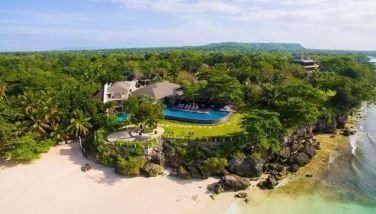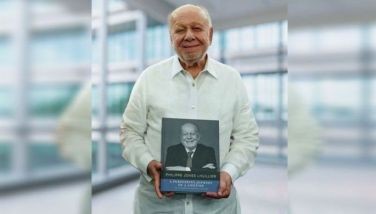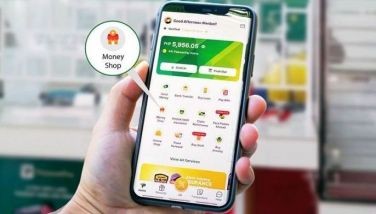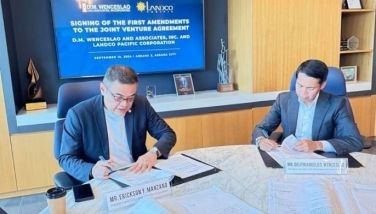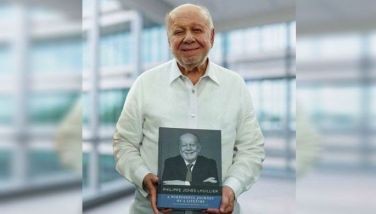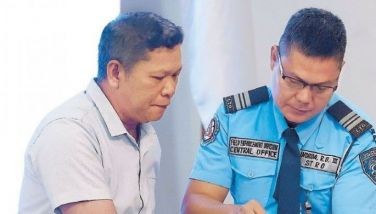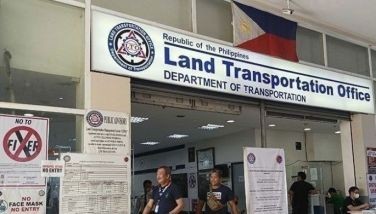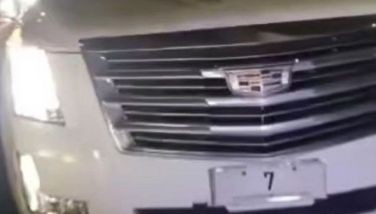The Cosmic Science curriculum an alternative program for teacher-training

August 4, 2005 | 12:00am
This forum will respond to the July 28 Department of Science and Technology forum on Teacher Education in Science and Mathematics — an alarm call on the serious lack of science and math teachers in the Philippines. DOST Director Dr. Ester Ogena has helped analyze this problem, which was also voiced out in Lingayen by the deans of education from major state universities of Regions I, II, and III, as well as the Cordillera Autonomous Region (CAR) who joined the nearly 100 superintendents and principals during the first of a series of three UNESCO Associated Schools Project Network (ASPnet) forum.
Dr. Montessori, however, felt that all subjects can best be introduced to preschoolers from three to five years old on a "sensorial level", then from six to 12 years old on an "intellectual level". This means making use of hands-on apparata for Math, Geometry, Language, Arts, and the innovative Cosmic Science program. The lessons are gradated in difficulty from preschool to grade school.
Thus, Maria Montessori brought the whole world into the preschool level making use of the two globes: the sanded globe, which helps the child feel "land and water"; and the colored globe showing the eight continents. Holding this, the trained teacher says, "If you cut the globe into two, you will have the two hemispheres of the world. The next material is the Puzzle Map of the World showing North and South America on one sphere, while Europe, Africa, Asia and Australia are on the other sphere.
Montessori History lessons in preschool refer to "time and the changes, which take place within it". The Family Time Line enables the child to cut and paste up paper strips, each centimeter representing one year. If he were five years old, the sister eight years old, Mama maybe 28, while Papa 32, and lolo is 60, then he would need 5, 8, 28, 32, and 60-centimeter long papers. Parallel to this is Time Line of the "basic needs of man" given to Grades I-III using picture cards of food, clothing or shelter representing the Primitive Man, the Ancient Civilizations, the Village Life, the Medieval Ages, Colonization period and Modern Time. These are laid out on the five-meter long scroll indicating 20 centuries before Christ and 20 centuries after Christ.
Without the early acquaintance with science in preschool, elementary school children frequently develop mental barriers. Aristotle, the Greek philosopher stated, "Nothing goes to the intelligence unless it passes first through the senses."
The Montessori preschool Botany classified cards teach the parts of a plant, a leaf, and a flower, while the Zoology classified cards teach the parts of a mammal, fish, reptile, and bird. By the first grade, the Nomenclature cards for fish illustrate the cardal fins, pelvic fins, dorsal fins, and the anal fin.
Lea Salonga started at the OB Montessori preschool in Angeles, Pampanga. When she transferred to the Montessori grade school in Greenhills, she worked with the Cosmic Curriculum. This involved advanced studies of Zoology. The Zoology classified cards are done together with the picture taxonomy of the Vertebrate Animal Chart and the Invertebrate Animal Chart between Grade III to Grade V. To study the internal parts of vertebrate animals, the intermediate students have to do actual anatomy of a fish, chicken, and frog. This surprised a professional Zoologist who exclaimed, "I only learned that in college."
The study includes the classification of animals by "division, classes, order, family, and genus" requiring me to purchase 37 pictures for the Vertebrate Chart and 20 pictures for the Invertebrate Chart, which are only available in France and Italy. Because of this, Lea’s earlier ambition was to take up medicine, but even when she was starring in London, she could still remember these Zoology nomenclatures. Like other OBMC grade school graduates, she can rattle off this classification even today.
The enormous reasoning power of elementary school children will become stagnant if dependent on computers. For example, when a student has to locate a place in South America, the use of the "mouse" will find the place or he types in the name of the town or city and out pops Tierra del Fuego at the tip of Argentina. The so-called computer addicts will miss the experience of using the magnifying glass, the maps, and book research in the library.
The other asset of grade school children is their imagination. Below are sample lessons which inflame their imagination.
Cold for us means ice cold. But ice is hot if you compare it with the coldness of space that separates the stars. In this cold and dark void, light was created. Then a vast fiery cloud appeared which included all the stars in the sky.
Explanation by way of lectures or reading books will not suffice to make the child comprehend this magnificent lessons. The imagination must be aroused. Dr. Montessori does this by using Chemistry experiments on Geography and History. (There are 42 Geography experiments and 20 History experiments.)
Geography Experiment #7: Cold-Freezing — makes use of ice, salt and two thermometers. This proves that the cold temperature of the ice is not the coldest. History Experiment #2: Formation of the Stars — makes use of water mixed with a few drops of olive oil and pure alcohol. Result: The yellowish olive oil bubble breaks into minute golden bubbles whirling in the water. This helps the child imagine how the stars were formed from the beginning and our planet Earth is one of the tiniest in the fiery cloud that is the whole universe.
Then God gave other commands. Each particle was given a special love for certain particles and a special dislike for others. (Just like human beings). Thus, they formed themselves into different groups. Solids stay closer to each other and maintain shapes while liquids flow freely and are shapeless while gas is completely loose and free.
The particles assumed different states which man called: the SOLID, the LIQUID and the GASEOUS states. Each of the three states is at the moment dependent on how hot or how cold it is. (Geography Experiments #12 to 22 and History Experiment #3)
How marvelous it is! And how simple! If you become hot, you expand, and as you expand, you become lighter and soar upwards, like a bubble of air in the water. But if you become cold, you shrink and fall, as a grain of sand sinks to the bottom of a pond. Because of this law, the earth gradually changed from a ball of fire to the earth we know. For hundreds, thousands, millions of years this dance went on. Finally, the particles settled down, like tired dancers.
It seemed as if the earth had taken some shape. But the elements inside were still very hot and felt trapped. They wanted to get out. What could they do otherwise? They had to follow the laws of God: if you are hot, you expand. So, they burst out. That’s why the earth is filled with volcanoes. The "ring of fire" or chain of volcanoes lies along the Equatorial Line that encircles the earth.
I hope that the alternative Cosmic Science curriculum will somehow help resolve the problems of lack of teacher-training programs, lack of instructional materials, as well as teachers’ barrier in their "inadequacy in using English as medium of instruction".
(Next week: The Cosmic Math Curriculum — an easier Math program from preschool to high school, part 2 of a series)
(For more information or reaction, please e-mail at [email protected] or [email protected])
BrandSpace Articles
<
>
- Latest
- Trending
Trending
Latest
Trending
Latest
Recommended






